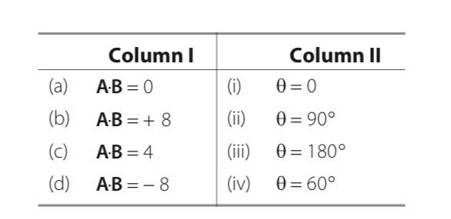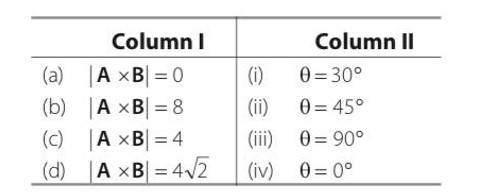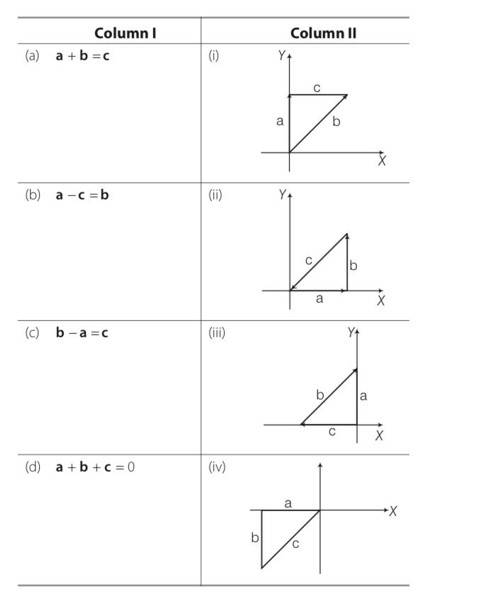Motion in a Plane
Get insights from 112 questions on Motion in a Plane, answered by students, alumni, and experts. You may also ask and answer any question you like about Motion in a Plane
Follow Ask QuestionQuestions
Discussions
Active Users
Followers
New answer posted
5 months agoContributor-Level 10
This is a Multiple Choice Questions as classified in NCERT Exemplar
Answer- b
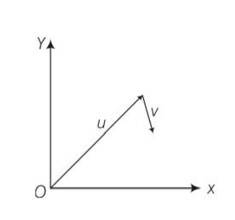
Explanation – u= a? + b? as u in the first quadrant, hence both components a and b will be positive. For v= p? + q? , as it is positive x direction and located downward hence x component p will be positive and y component q will be negative.
New answer posted
5 months agoContributor-Level 10
This is a Multiple Choice Questions as classified in NCERT Exemplar
Answer- d
Explanation- a scalar quantity is independent of direction hence has the same value for observers with different orientations of the axes.
New answer posted
5 months agoContributor-Level 10
This is a Multiple Choice Questions as classified in NCERT Exemplar
Answer- b
Explanation-A = i+j
B = i-j
A.B=|A|B|cos
(? +? ). (? -? ) = cos
Where is the angle between A and B
Cos = =
= 90o
New answer posted
5 months agoContributor-Level 10
This is a Short Answer Type Question as classified in NCERT Exemplar
Explanation- given |A|=2 and |B|=4
a)|A |=AB cos = 0
so 2 cos =0
so so it matches with ii
B) |A B|= ABcos =8
2 cos =8
So = 0 so it matches with option i
c) |A B|= ABcos =4
so =60 so it matches with option iv
d) |A B|= ABcos =-8
so =180 so it matches with option iii
New answer posted
5 months agoContributor-Level 10
This is a Short Answer Type Question as classified in NCERT Exemplar
Explanation- given |A|=2 and |B|=4
a)|A |=AB sin = 0
so 2 sin =0
so so it matches with iv
B) |A B|= ABsin =8
2 sin =8
So = 90 so it matches with option iii
c) |A B|= ABsin =4
so =30 so it matches with option i
d) |A B|= ABsin =4
so =45 so it matches with option ii
New answer posted
5 months agoContributor-Level 10
Explanation – here A and B vectors are joint by head and tail. So C= A+B
(a) from fig iv it is clear that c=a+b
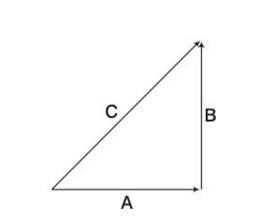
(a) from fig iii it is clear that c+b=a so a-c=b
(b) from fig I it is clear that b=a+c so b-a =c
(c) from ii it is clear that -c= a+b so a+b+c=0
New answer posted
5 months agoContributor-Level 10
This is a Short Answer Type Question as classified in NCERT Exemplar
Explanation – a) radius of earth =6400km= 6.4
Time period = 1 day = 24 = 86400s
Centripetal acceleration a= w2r= R(2 )2=4 2R/T
= = 0.034m/s2
b) time = 1yr=365 days= 365=3.15
centripetal acceleration = Rw2=
2
New answer posted
5 months agoContributor-Level 10
This is a Short Answer Type Question as classified in NCERT Exemplar
Explanation- when it be at position P, drops a bomb to hit a target T
Let
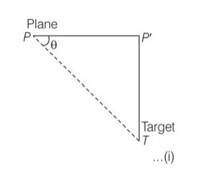
Speed of the plane =720km/h = 720 = 200m/s
Altitude of the plane P'T = 1.5km= 1500m
If bomb hits the target after time t then horizontal distance travelled by the bomb PP'=u =200t
Vertical distance travelled by the bomb P'T=1/2gt2
1500 = ½ (9.8)t2
So t2= 1500/4.9, t =
PP'=200 (17.49)m=
tan =P'T/P'P=1500/200 (17.49)=0.49287= tan23012'
New answer posted
5 months agoContributor-Level 10
This is a Short Answer Type Question as classified in NCERT Exemplar
Explanation – due to air resistance particle energy as well as horizontal component of velocity keep on decreasing making the fall steeper then rise. When we are neglecting air resistance path is parabola when we consider air resistance then path is asymmetric parabola.
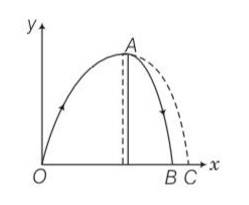
New answer posted
5 months agoContributor-Level 10
This is a Short Answer Type Question as classified in NCERT Exemplar
Explanation – the boy throws the ball at an angle of 60.
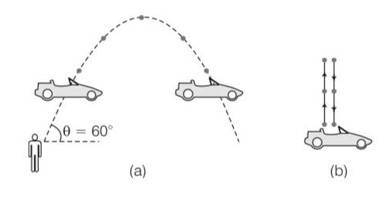
Horizontal component of velocity 4cos = 10cos60
=10 (1/2)
=5m/s.
so horizontal speed of the car is same, hence relative velocity of car and ball in the horizontal direction will be zero.
Taking an Exam? Selecting a College?
Get authentic answers from experts, students and alumni that you won't find anywhere else
Sign Up on ShikshaOn Shiksha, get access to
- 65k Colleges
- 1.2k Exams
- 679k Reviews
- 1800k Answers

